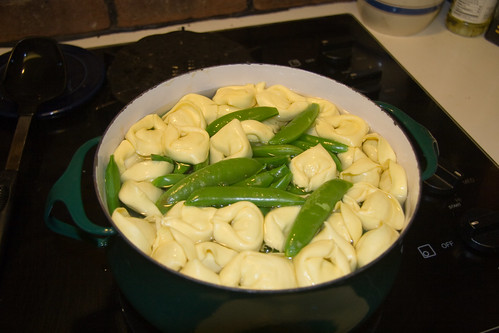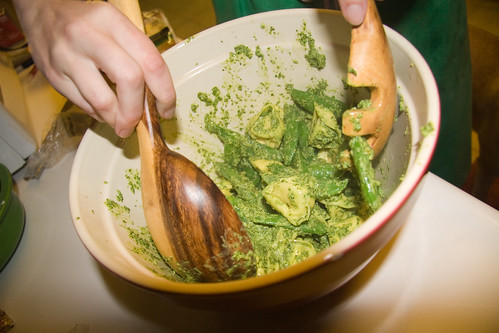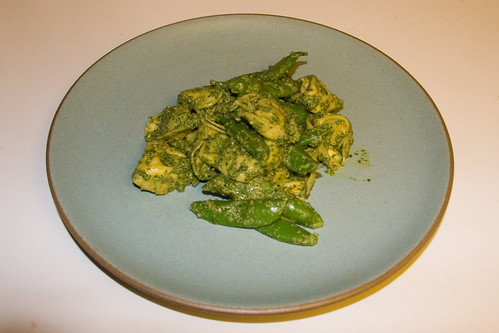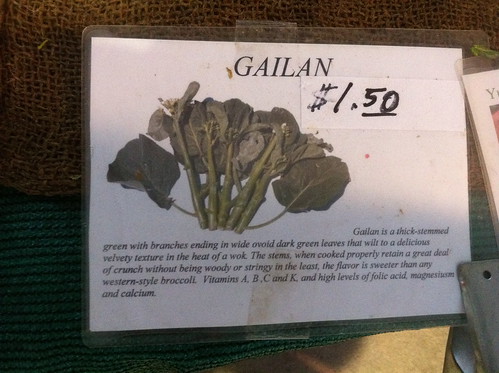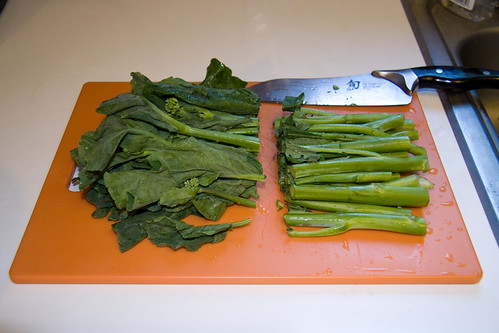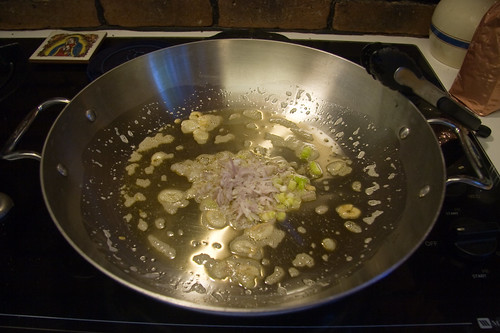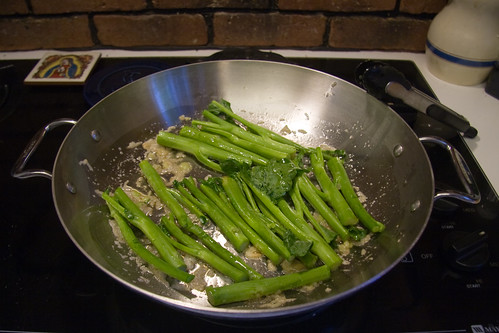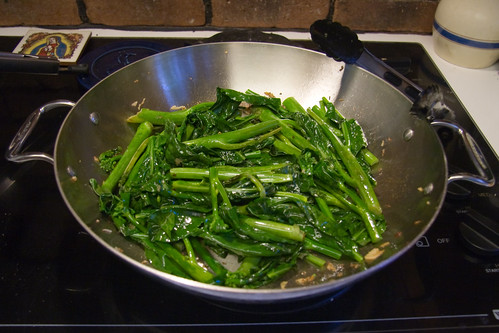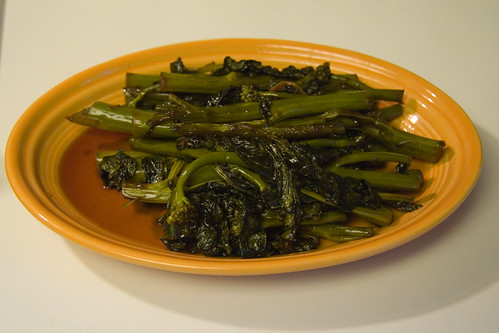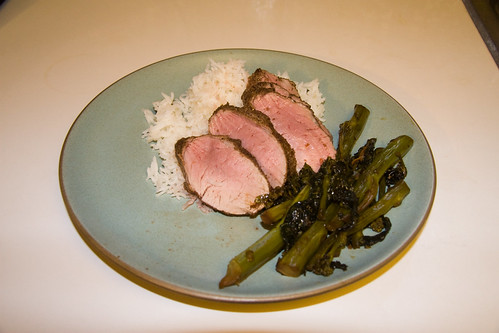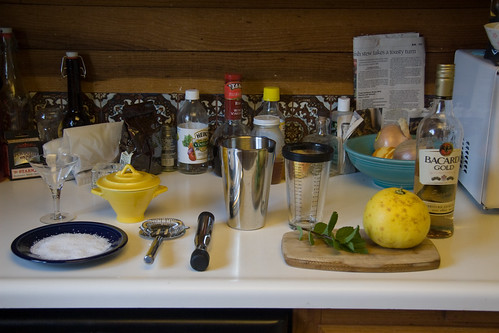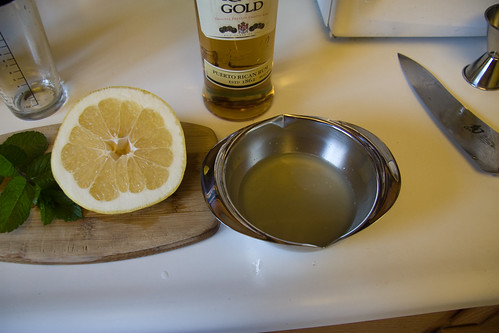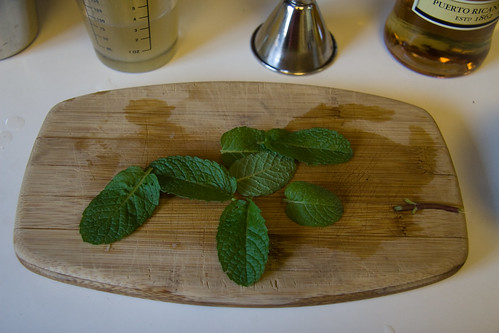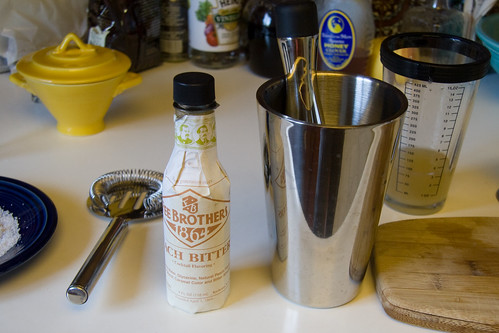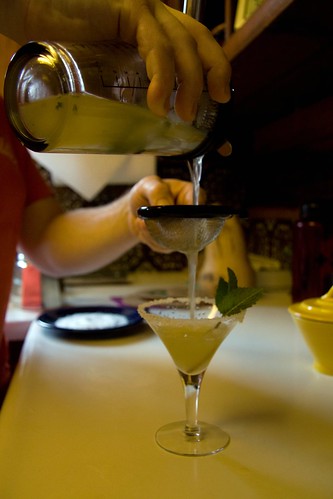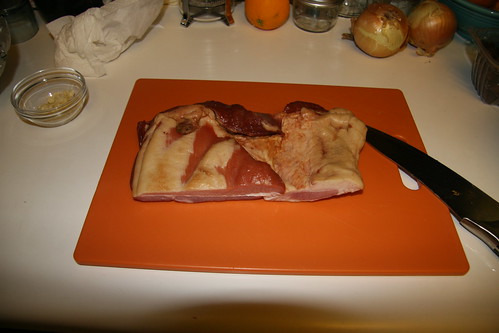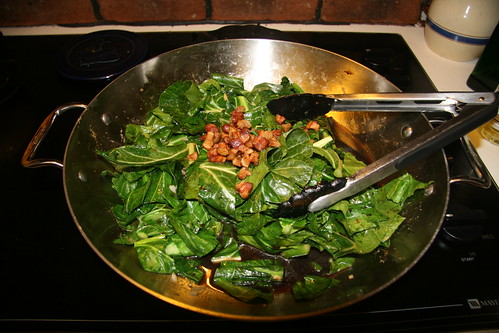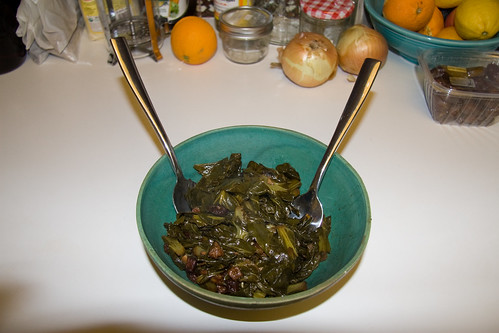Shortly after we married, Jen and I built a planter box. It was the tail end of summer, and we planted some flowers to decorate for her birthday, knowing that the next spring we would use the planter in earnest for some vegetables. To protect the soil from an invasion of weeds, we needed a cover crop for fall and winter. From the many options at the nursery, we chose fava beans, looking forward to a tasty crop of beans in the middle of winter. The beans grew quickly—almost alarmingly fast—until December, when Portland was beset by a week or more of White Christmas. The freeze killed the fava beans, whose vigorous stalks seemed to melt with the snow into a sad What-Could-Have-Been.

That winter was the closest I’ve ever come to cooking fava beans, until this week. Strolling the Wednesday Farmers’ Market, which still consists mostly of citrus, I was excited to see that Vue Family Farm had a large pile of robust favas for a mere $1 a bunch. I snapped up one bunch, then added a second. I’m very glad I got the second bunch, because I had not realized how little of the large pods is actually filled with edible bean.
We chose to make “Roman Style” fava beans, which are simply fava beans, onion and pancetta fried together with a little salt and pepper. Incidentally, “Roman Style” is pretty much code for frying things. Rome sounds great. The first step towards our Faba Romana was to shell the beans. The insides of the pods are soft and wooly, and each bean is nicely nestled into its own spot, attached on alternating sides of the pod.
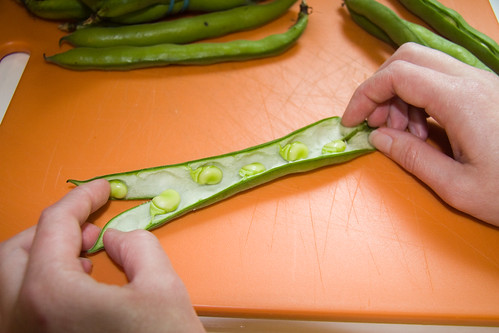
Once we had extracted the beans, we blanched them to make removal of their skins easier. The outer skin can be left on while cooking, to be removed by the diner, but since we were mixing them with other things, it seemed easier not to have to deal with that after the fact. Once they were blanched, removing the skins was as easy as gently squeezing them till the bean slid out.
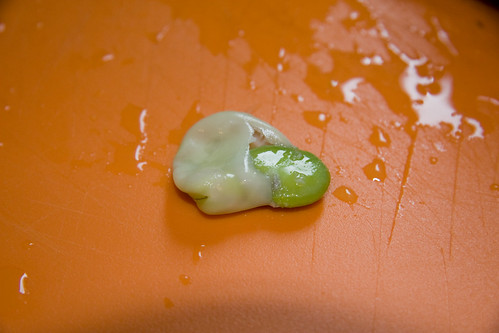
Soon we had a small bowlful of shelled and skinned fava beans that were a shadow of their former bulk.
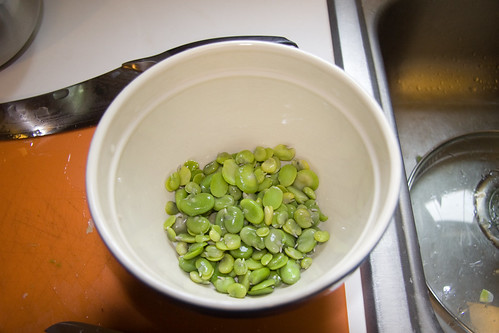
I cut off about a quarter pound of Bledsoe Meats’ pancetta, and sliced it into thick pieces, about 3/4″ square by 1/4″ thick. I threw these in a skillet and cooked them over medium heat until they began to get crispy, and their fat had melted into the pan, about 12 minutes.
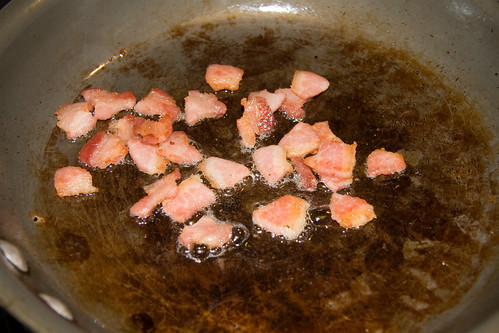
I then added the onions and cooked them with the pancetta for about 5 more minutes before adding the fava beans.
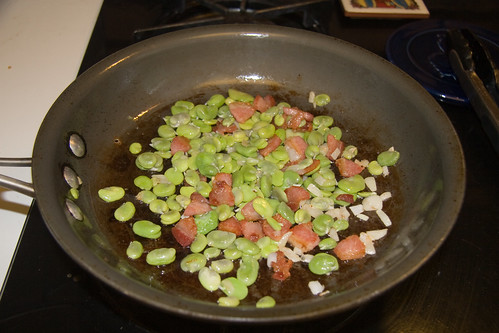
The beans only needed to cook another 3 minutes or so. I added a dash of salt and a few turns of the pepper mill, tossed it all around once more and it was ready to eat.
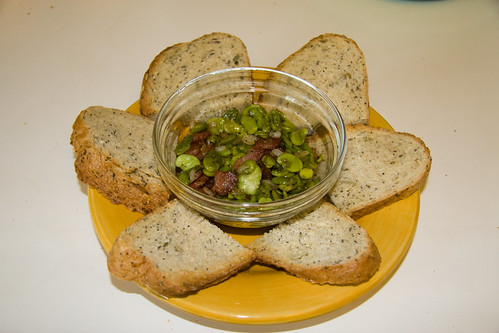
These were really good by the forkful as well on some toasted bavarian bread from OctoberFeast Bakery out of Berkeley, CA. As I dug in, Jen assured me I would love Rome.
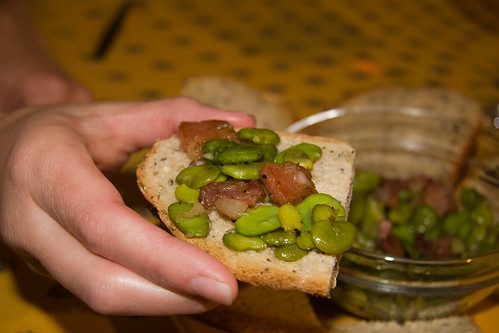
All the photos are here, and the pizza we followed it with is here.




